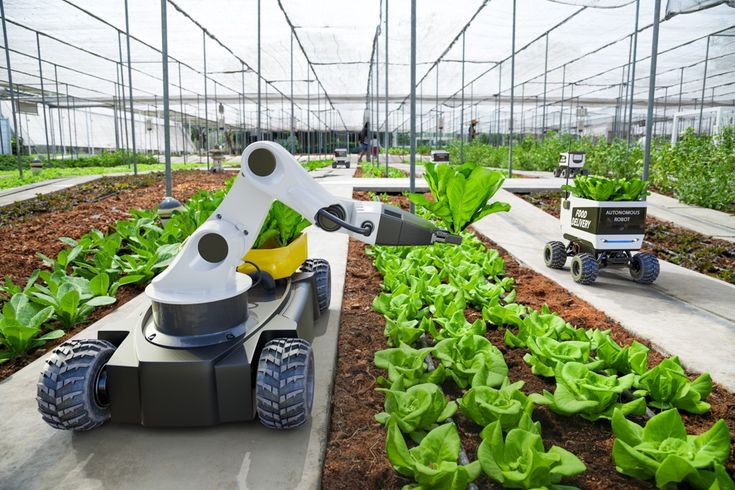The agricultural ecosystem is undergoing a dynamic shift, thanks to the seamless integration of technology and commerce. Where farmers once relied solely on local input suppliers, verbal advice, and weekly markets, they now have access to powerful digital tools that bring transparency, affordability, and scalability right into their hands. Welcome to the era of Farm2Market—a growing digital revolution where Kisan can buy inputs, sell outputs, compare prices, and receive expert guidance through a single tap.
With the rise of agri apps across India, the agricultural supply chain is no longer fragmented. From soil preparation to crop harvesting, every stage can now be optimized using mobile-based platforms. Tools like the agribegri app are becoming indispensable, connecting farmers directly with quality agri products, helping them make informed choices, and eliminating multiple layers of intermediaries. This not only empowers farmers but also enhances profitability in an industry long plagued by inefficiencies.
The Rise of Agriculture E-Commerce in India
The agriculture sector, contributing nearly 18% to India’s GDP, has always been a vital component of the country’s economy. However, traditional inefficiencies—from supply chain leakages to pricing opacity—have hindered its full potential. Enter digital commerce, powered by mobile penetration, real-time connectivity, and growing awareness among the rural population.
Key reasons why e-commerce is reshaping Indian agriculture:
- More than 70% of farmers now use mobile phones to access market information, weather alerts, or buy inputs.
- AI-driven platforms help personalize recommendations based on soil health, climate trends, and crop cycles.
This digital wave is democratizing agriculture, ensuring that even a khedut in a remote hamlet can access the same quality inputs as a progressive grower near an urban center.
Products That Are Powering the Farm2Market Movement
With the growth of e-commerce, several agricultural products have become top-sellers due to their versatility, efficacy, and compatibility with multiple crops. These include fertilizers, herbicides, growth promoters, and micronutrients. Let’s explore a few game-changing products and understand their role in modern farming.
1. Zinc Sulphate Monohydrate (ZnSO₄·H₂O – 33%)
Application: Used across a wide range of crops including maize, rice, wheat, and pulses. Zinc is a vital micronutrient responsible for enzyme activation and protein synthesis.
How to Use: Applied either through basal soil application or foliar spray. Common dose ranges from 25–30 kg per hectare.
How It’s Made: Manufactured by reacting sulfuric acid with zinc-containing minerals, then crystallized into a water-soluble form.
Benefits:
- Prevents stunted growth and leaf chlorosis in crops.
- Improves grain size and yield uniformity.
- Essential in correcting zinc-deficient soils, common in Indian subcontinent.
Limitations:
- Overuse can interfere with phosphorus uptake.
- Must be evenly distributed for uniform results.
2. Pendimethalin 30% EC (Pre-emergent Herbicide)
Where to Use: Crucial for weed control in soybean, groundnut, mustard, cotton, and pulses.
Method: Apply to moist soil within 2–3 days of sowing. Avoid disturbing soil post-application for at least a week.
Technology: A selective herbicide that inhibits cell division in weed seedlings.
Advantages:
- Effective against annual grasses and broadleaf weeds.
- Reduces labor required for manual weeding.
- Enhances water and nutrient availability for the main crop.
Challenges:
- Not effective against established or perennial weeds.
- Requires precise moisture for activation—less effective in arid regions.
3. Humic Acid Liquid (12%)
Best Fit: Works as a bio-stimulant across vegetables, cereals, fruits, and floriculture.
Usage: Apply through drip irrigation or foliar spraying at key growth stages. Can be used in combination with fertilizers.
Production Process: Extracted from leonardite ore using alkaline solutions, then diluted to create plant-friendly liquid.
Core Benefits:
- Enhances root development and nutrient uptake.
- Stimulates microbial activity in the rhizosphere.
- Increases plant tolerance to abiotic stress like drought or salinity.
Points to Consider:
- Works best in conjunction with balanced fertilization.
- Not a replacement for primary NPK nutrients.
4. Calcium Nitrate (Ca(NO₃)₂ – 15.5% N + 18.5% Ca)
Ideal For: Fruits and vegetables like tomato, capsicum, banana, and citrus.
Application: Use as fertigation or foliar feed during fruit-setting and bulking stages.
How It’s Formulated: Synthesized via reaction between nitric acid and limestone or ammonium nitrate.
Benefits:
- Prevents blossom end rot in fruits and tip burn in leafy greens.
- Improves cell wall strength, increasing post-harvest shelf life.
- Nitrogen component is immediately available for rapid uptake.
Disadvantages:
- Slightly hygroscopic—needs airtight storage.
- Costlier compared to other nitrogen sources but delivers targeted results.
“In the future of farming, knowledge and nutrients will travel at the speed of connectivity.”
Personalized E-Commerce with an AI-Driven Brain
The success of agri e-commerce isn’t just about online availability—it’s about smart recommendations and localized decision support. Modern agri apps are increasingly powered by AI-driven systems that adapt to each farmer’s needs.
They analyze:
- Crop calendars and sowing dates.
- Soil test results and historic deficiencies.
- Geo-tagged weather data and pest patterns.
This level of granularity ensures that the Kisan doesn’t buy generic products, but ones that precisely match their farming context. For instance, an app might recommend zinc sulphate for a farmer in Bihar with alkaline soil, while suggesting humic acid and calcium nitrate for a banana grower in Tamil Nadu during the flowering phase.
E-Commerce Platforms Are Building Farmer Confidence
Farmers are rapidly shifting from physical stores to digital platforms, and the reason goes beyond convenience. Here’s what they’re gaining:
- Product authenticity: Verified listings and batch-wise traceability prevent spurious inputs.
- Peer reviews and expert ratings: Real-world usage insights.
- Flexible pricing and doorstep delivery: Eliminates transport costs and middlemen margins.
A recent survey by ICAR found that farmers using khedut app-enabled platforms for input purchases reduced input costs by 15–20% per season, while increasing yields by 10–12% due to timely and correct application.
Enabling Transparent Farm Economics
Another critical benefit of digital agriculture platforms is price visibility. Farmers can now:
- Compare rates across suppliers in real time.
- Receive alerts when prices drop or demand peaks.
- Forecast costs for upcoming crop cycles.
This transparency helps in budget planning, loan applications, and crop insurance claims—bringing farmers closer to financial independence and reducing reliance on informal credit systems.
What the Future of Farm2Market Looks Like
We are only at the beginning of this transformative journey. The next phase of agri e-commerce will include:
- Voice-activated ordering for illiterate farmers.
- Blockchain-enabled input traceability to ensure full product lifecycle data.
- Drone integration for field-specific delivery and spray mapping.
Further, as the rural internet infrastructure improves, so will adoption. What was once considered futuristic—like drone-delivered micronutrients or AI pest alerts—is rapidly becoming a reality.
Learn more about: Revolutionizing Event Experiences: Power of AI in Events.






